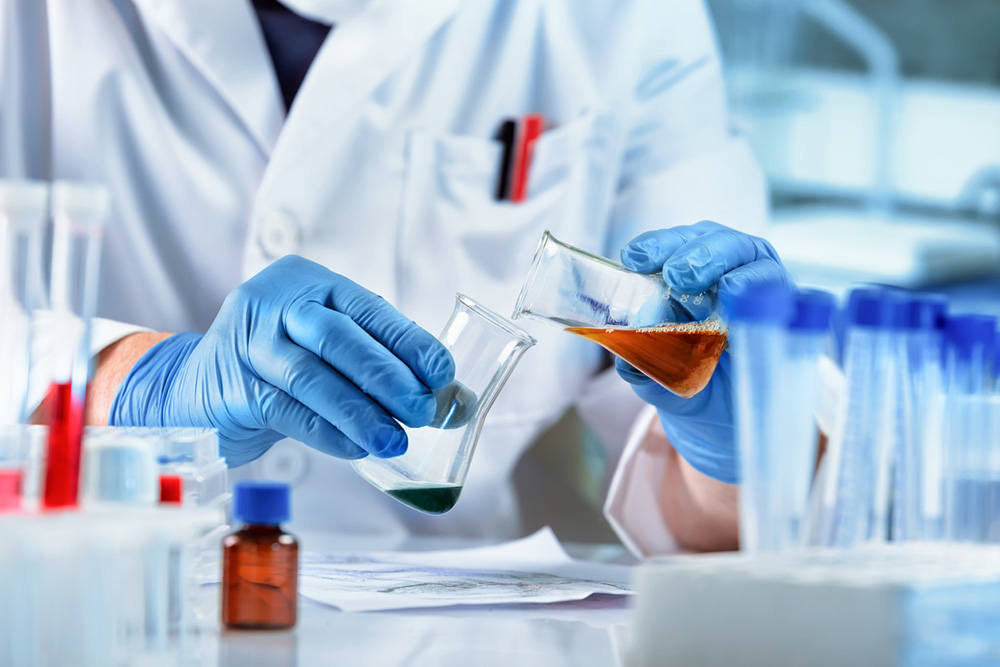NY Legislation Puts Manufacturers Under New Focus
In a move designed for environmental safety and consumer health, New York State has enacted legislation that sets stringent limits on the concentration of 1,4-Dioxane in cleaning products. In the phase-in structure of the law, the limit is now just 1 part per million (PPM) as of Jan. 1, 2024. This obviously puts the need for 1,4-Dioxane testing front and center for many product manufacturers.
Here we’ll examine the new law, how household cleaning product manufacturers can devise a plan of attack, and the need for a trusted third-party chemical compliance partner.
What is 1,4-Dioxane?
1,4-Dioxane is a byproduct of ethoxylation, a process commonly used in manufacturing cleaning products. It is frequently found in ingredients such as Sodium Laureth Sulfate and Ethoxylated Alcohols. While less common, it can also be present in fragrances and some cationic surfactants. The new legislation necessitates that manufacturers of household cleaning products reassess their formulations to ensure compliance.
The legislation presents a considerable challenge for the industry. 1,4-Dioxane is not an ingredient that is deliberately added to products; rather, the synthetic industrial chemical can be introduced as a trace contaminant in certain ingredients, most significantly detergents, foaming agents, emulsifiers and solvents. This makes the reformulation process particularly complex, requiring a detailed understanding of the manufacturing process and the chemical composition of the raw materials used.
The law has separate limitations for three categories of consumer products: cosmetics, personal care, and household products. The latter two are known to generally contain higher levels of 1,4 Dioxane. For cleaning product manufacturers, it’s essential to focus on the limit for your specific market—1 PPM.
Using 1,4-Dioxane Testing as Part of Your Formulation Plan
The law defines household cleaning products as any that include soaps and detergents containing a surfactant as an emulsifying agent, and used primarily for domestic or commercial cleaning. Manufacturers may apply for a one-year waiver for a specific product if they are able to prove they’ve taken steps to reduce the presence of 1,4-Dioxane and are still unable to meet the statutory limits.
Any product that contains 1,4-Dioxane in excess of the maximum trace concentrations in the law cannot be sold in New York. Failing to comply with the law can result in civil penalties, including fines and removal of the product from store shelves.
It’s important to note that chemical assessment—not merely analysis— is going to be critical for compliance with this legislation. Early indicators show this will be legislated based on the ‘theoretical’ calculation of 1,4-Dioxane in the raw materials as opposed to an actual qualitative measurement. This is likely because background concentrations could cause a product to be noncompliant and would be difficult to account for in terms of the actual enforcement of the legislation.
Your testing partner would calculate the total amount of theoretical Dioxane based on the raw material safety data sheets and ensure the products are compliant with this metric.
Here’s a general checklist to account for the new law. It’s critical to incorporate 1,4-Dioxane testing as part of the process. If unable to do so internally, a third-party chemical compliance laboratory is required.
- Determine the specification of 1,4-Dioxane in your raw materials. This should be based on a guaranteed maximum specification and not a one-time test level.
- Review each formula and determine/calculate the total 1,4-Dioxane content in PPM. Analytical testing on certain bases or formulas can also help to get an idea of levels of 1,4 Dioxane. Remember that levels can vary lot to lot.
- Work with your raw material supplier to try to set a lower maximum level if possible.
- Update your internal ingredient policy and train internal technical teams, suppliers, and third-party manufacturers on the updates to the policy.
- Reformulate as required. Utilize restages where possible to formulate without sulfates.
Expert chemical compliance assistance is a necessity. 1,4-Dioxane testing should be conducted with a partner with substantial experience in the household cleaning products industry.
For 1,4-Dioanne Testing and All Chemical Compliance Needs, Trust FCS Consulting
The new legislation in New York regarding 1,4-Dioxane concentrations in cleaning products marks a crucial step towards safer consumer products and environmental protection. While it poses challenges for manufacturers in terms of reformulation and compliance, it also opens avenues for innovation and market differentiation. Adhering to the new standard is required, and within reach for all manufacturers when they work with trusted testing providers.
At FCS Consulting, we act as an extension of your team conducting chemical analysis required to meet new and emerging standard requirements and offering compliance consulting to keep you in the loop about regulations in the household cleaning products industry. We can provide turnkey formulations to expedite getting your product to market and provide many other formulation services—such as generating Safety Sheets or assisting in achieving EPA certifications. Our in-house chemical testing lab and full-time technicians provide professional formulation analysis when you need it.
Contact our team today to discover how we can handle your 1,4-Dioxane testing needs and much more.
With the adoption of new stringent regulations in New York, the need for 1,4-Dioxane testing has never been greater for cleaning product manufacturers.
Fines and product recalls are a risk if you fail to adhere to strict 1,4-Dioxane concentration limits in New York. Formulation analysis and testing are critical for this, and many other, industry challenges. Learn more here: (blog link)
With consistent 1,4-Dioxane testing you can ensure your household cleaning products remain compliant with current and future regulations. Learn about the new 1 PPM limit in New York, and how we can help here: (blog link)

